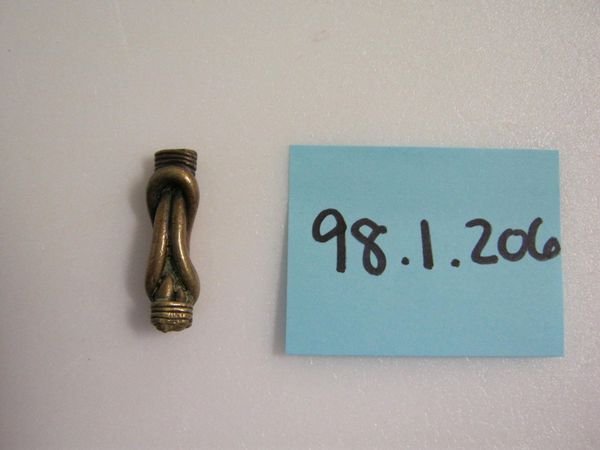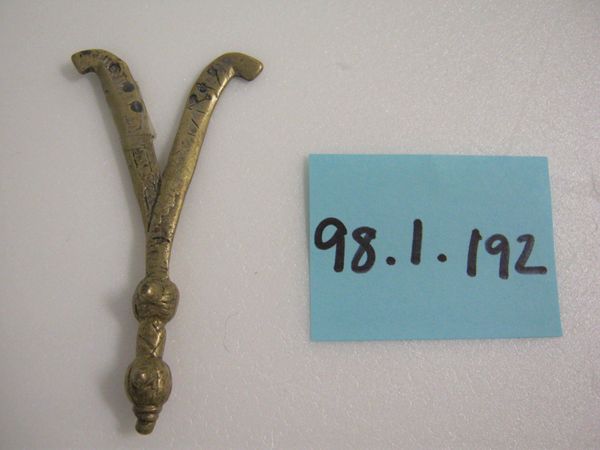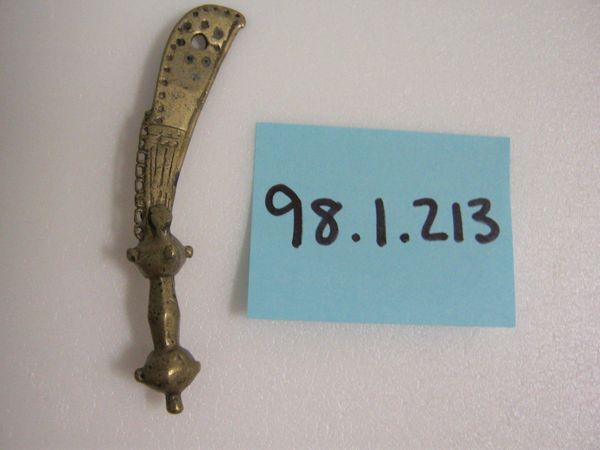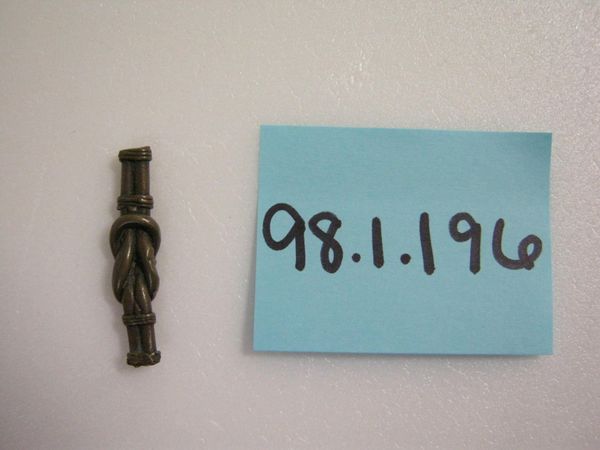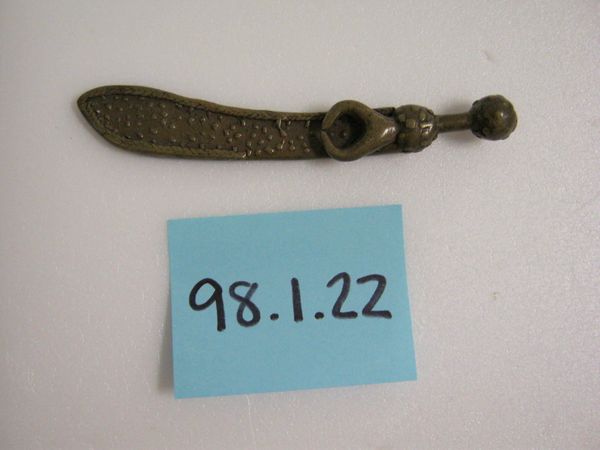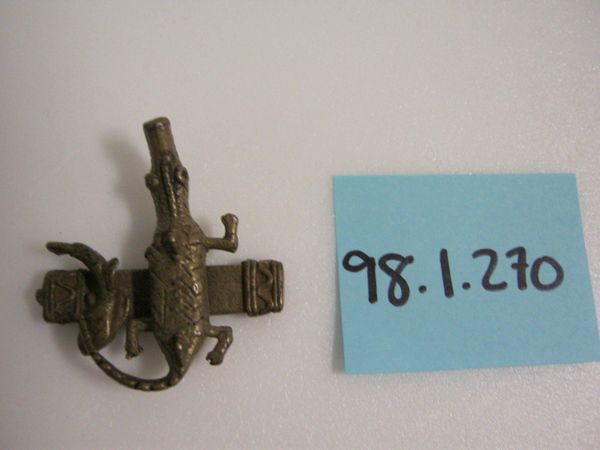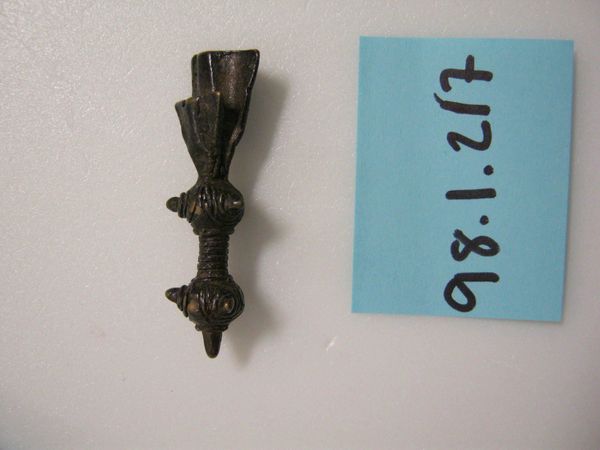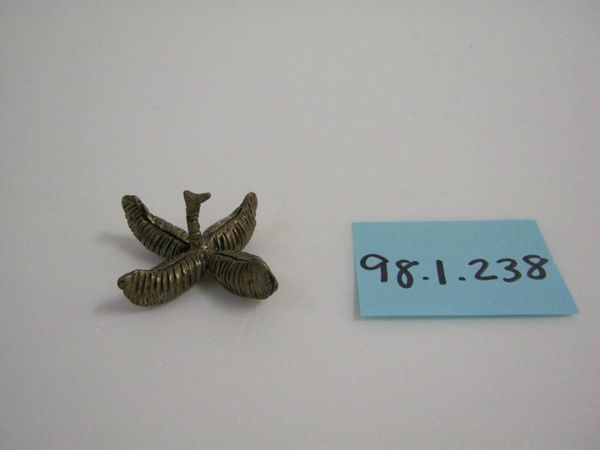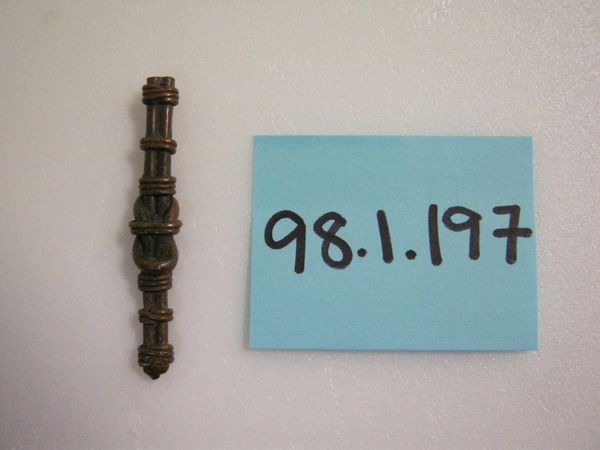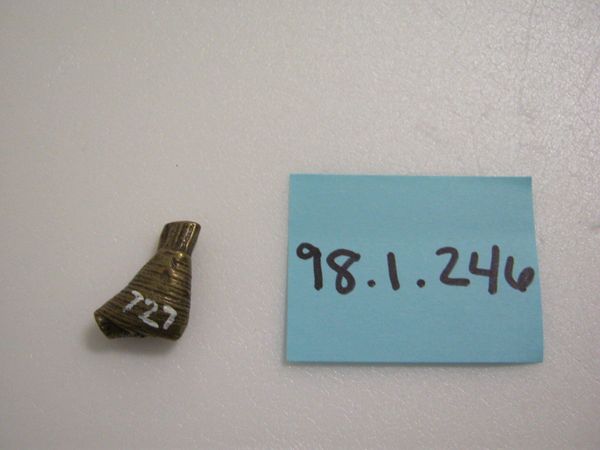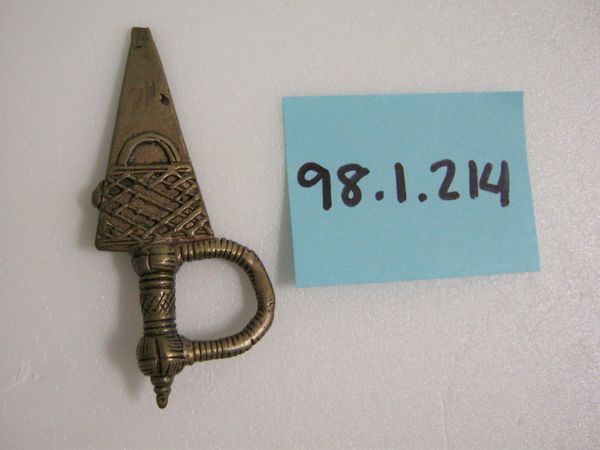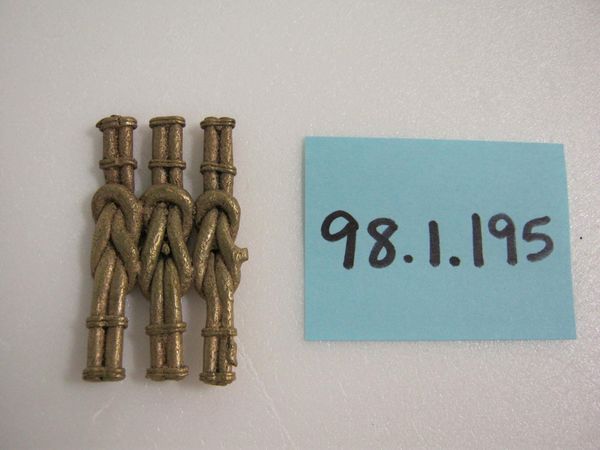![Goldweight [Scorpion] by Akan](/_next/image?url=https%3A%2F%2Fd2w8kbdekdi1gv.cloudfront.net%2FeyJidWNrZXQiOiAiYXJ0ZXJhLWltYWdlcy1idWNrZXQiLCAia2V5IjogImFydHdvcmtzLzFhOGMwOWUyLWFmNDctNDQ3ZS1hMTE3LWExYTc5NmI3ZDFkNC8xYThjMDllMi1hZjQ3LTQ0N2UtYTExNy1hMWE3OTZiN2QxZDRfZnVsbC5qcGciLCAiZWRpdHMiOiB7InJlc2l6ZSI6IHsid2lkdGgiOiAxOTIwLCAiaGVpZ2h0IjogMTkyMCwgImZpdCI6ICJpbnNpZGUifX19&w=3840&q=75)
brass, sculpture
brass
figuration
sculpture
Dimensions: 3/8 x 1 x 2 in. (0.95 x 2.54 x 5.08 cm)
Copyright: Public Domain
Curator: What a peculiar form. The interwoven striations running the body seem to bind the piece. Is it meant to hold something or… Editor: This is a Goldweight created by the Akan peoples, probably during the 19th or 20th century. It’s now held in the collection of the Minneapolis Institute of Art, and it’s constructed of brass using the lost-wax casting method. Its form references a scorpion. Curator: Ah, the lost wax method accounts for such a clean and delicate texture of binding, so thin but numerous! Editor: In Akan culture, the scorpion often symbolizes cunning and strength. Goldweights like these were functional objects used in trade to measure gold dust. But their significance extends far beyond mere practicality. The image of the scorpion here is a clear symbolic warning about those who use their position and privilege for dishonesty. Curator: And there’s a potent psychological dimension here. It serves as both a visible and tangible reminder of morality. The brass casting suggests an economy of motion: few curves but maximal visual interest through consistent horizontal lines. And how small it is, just mere inches, meant to be hidden! Editor: Yes, size matters because it's a reminder that even small actions can have huge consequences, just like a scorpion’s sting. Also, Akan goldweights often incorporate proverbs, adding layers of meaning. I would not be surprised if there is a saying connected to this depiction. Curator: Perhaps about protecting yourself from unexpected betrayals? Looking closer, the surface of the brass shows significant texture, as well, which is a nice material variance that suggests it's an ancient or used thing. The artist takes some risks in repetition that are handsomely rewarded in a pleasing figure. Editor: Exactly! It speaks to the depth of cultural meaning imbued into everyday objects. You start to see the ingenuity present in everyday design. It reminds us how forms are born of beliefs and values. Curator: Precisely. And, looking again, there is great care that the artist put into the stinger that hangs behind and beneath its form. The eye moves about, searching out new lines in the woven basket. What a powerful symbol it holds. Editor: Indeed. It has an integrity about it, even to contemporary viewers like us. I’m fascinated by how design principles transcend epochs, aren't you? Curator: Absolutely. I leave this with a new understanding and appreciation for the depth of symbolism embedded in what appears at first glance to be a mere utilitarian piece.
Comments
No comments
Be the first to comment and join the conversation on the ultimate creative platform.
